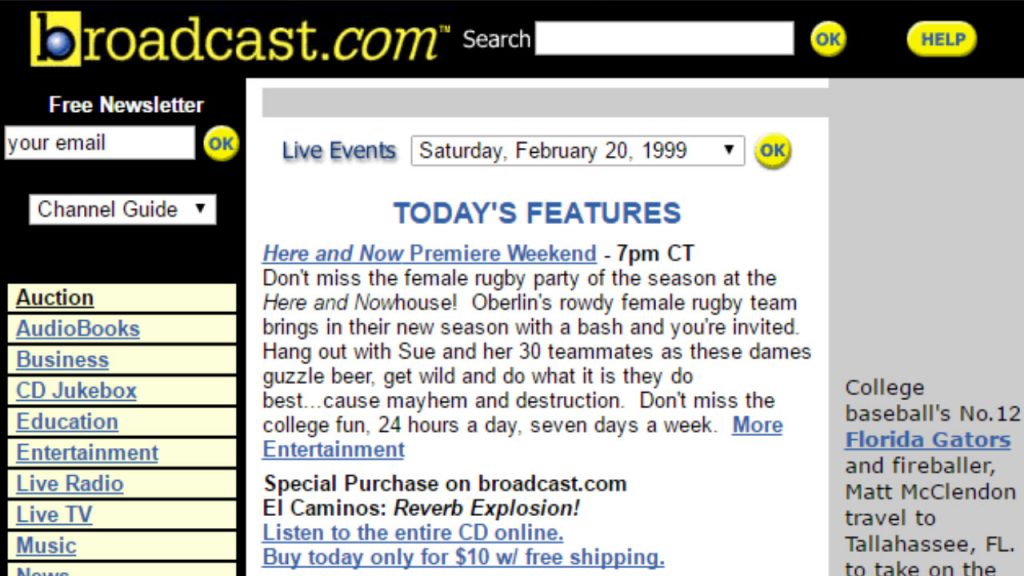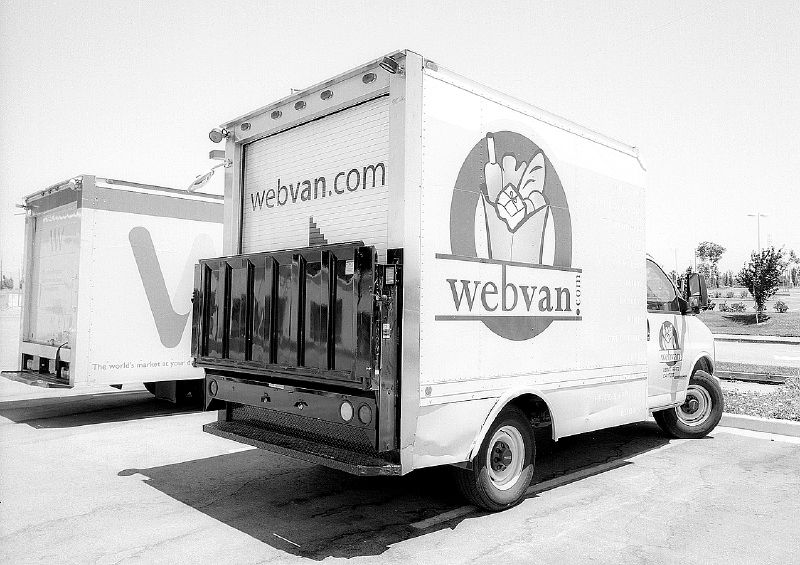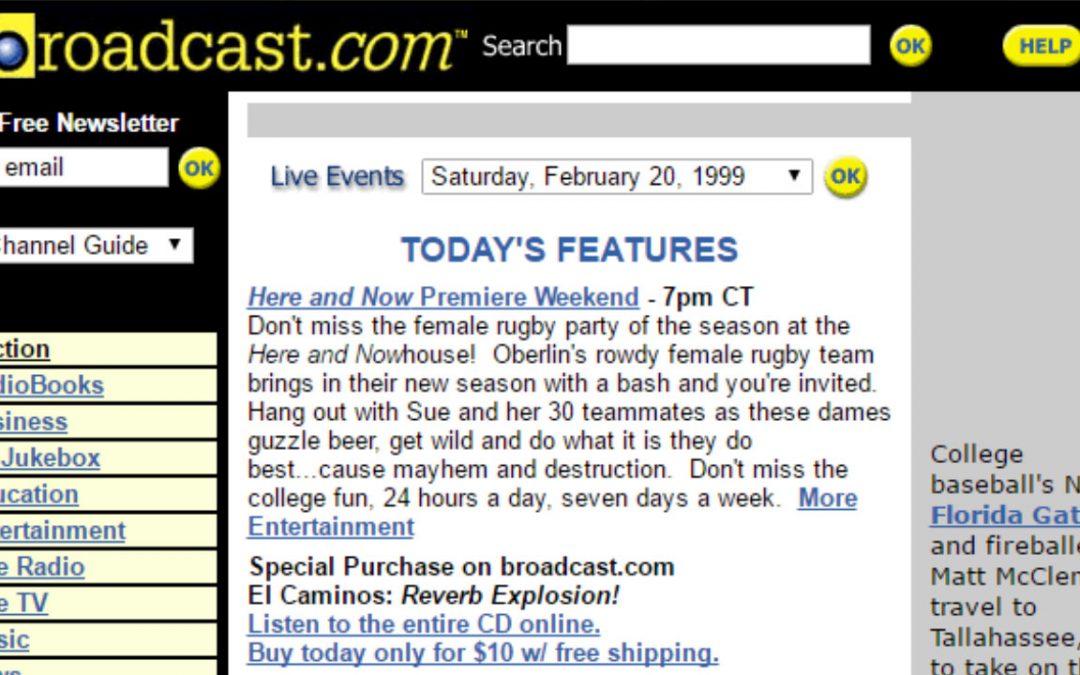The dot com bubble lasted from around 1996 to 2000. It was when stock prices for internet based businesses grew incredibly rapidly. This led to an explosion of tech startups, and billions of dollars in investments focused on these startups. There was a time when any idiot with any idea for a website could receive backing from venture capitalists. Many of the world’s biggest and most successful companies were either founded during, or were put on the map during the dot com bubble. But every bubble must eventually burst and devastate their industry. The result of this is many dot com bubble failures who immediately went out of business. In fact, most internet businesses were closed down when the bubble burst. Some huge companies, like Amazon and eBay, almost went out of business themselves. But today we’re just focusing on those who went out of business. Here are 10 dot com bubble failures.

Pets.com
Pets.com was founded in 1998, and it saw huge success in it’s early stages. The business model was basically just selling pet supplies and accessories online. They saw so much success that it was sold to venture capitalists just one year later, in 1999. This was the peak of the dot com bubble. About 300 million dollars was invested in the business, but that wasn’t enough to save it. The company was constantly losing money. Investors didn’t mind it’s profitability being negative just as long as the website’s stock price continued to rise. But the dot com bust left them unable to raise more money from investors. So they were just left with a fundamentally failing retail business. Stock prices fell from 11 dollars to just 19 cents. The company was completely defunct by the end of the year 2000.

Broadcast.com

In a sense, Broadcast.com wasn’t a failure as it was highly profitable for those who founded it. But the website was shut down but those who purchased it. The website was founded by shark tank star Mark Cuban, as a place where television shows would be broadcast live over the internet. The site grew rapidly and drew the attention of big business. In 1999, it was purchased by Yahoo for a massive 5.7 billion dollars! That was Yahoo’s biggest acquisition, and it’s what made Mark Cuban a billionaire. But the number of website users swiftly declined to the point where the site was split up into seperate assets and made defunct. So Yahoo lost 5.7 billion dollars. Also, focusing on their new website distracted them from Yahoo’s search function. This allowed Google to take their spot as the number one search engine. Yahoo has been steadily dying ever since.

Boo.com
Boo.com was launched with the purpose of becoming the internet’s prime location for purchasing clothing. They secured major backing from investors and immediately launched a huge marketing campaign. They actually spent almost 190 million dollars on advertising campaigns, and that was just in the first 6 months. The only problem is that their actual business wasn’t profitable enough to keep up with the money being spent on marketing. So the brand name was widely recognized by people who didn’t want to spend money on it. Inevitably, the website joined all the other dot com bubble failures in going out of business. They took on over 400 employees before going bust, which was another waste of money. Ironically, their slogan was “fashion never dies”.

WorldCom
WorldCom was an internet service provider that grew rapidly during the dot com bubble. But the telecoms business was thrown into decline around the year 2000. Their growth fell, and they were forced to take on huge 400 million dollar loans to avoid bankruptcy. But their business was still declining, so they resorted to outright fraud. They inflated revenues and failed to account for many legal issues. This grabbed the attention of the American government, and the WorldCom CEO was soon found guilty of fraud. On top of all that, the company was forced to file bankruptcy in 2002. They were in debt for over 5 billion dollars and their assets were soon divided up and sold off.

GeoCities
![]()
GeoCities was launched in 1995 as a web hosting business. It soon grew in popularity even know it was originally just meant to be a small business. By 1998, it was the world’s third most visited website. The first two were AOL and Yahoo. Yahoo saw this as their opportunity to secure a bigger audience and gain a clear lead over AOL. So they purchased GeoCities for 3.6 billion dollars in early 1999. Yahoo is famous for making incredibly bad decisions when purchasing their assets. The purpose of the website was to create webpages representing individual neighborhoods like Wall street and West Hollywood. People became website users to create a page for their own neighborhoods. People even created pages for Area51. It’s popularity tanked after Yahoo purchased it; the website it now defunct.

Kozmo.com

Kozmo.com was a big deal in New York city during the dot com bubble. It was an online retail service with the focus on speed. They promised that whatever was ordered from their website would be delivered in one hour or less. And delivery was also free. The business raised over 200 million in capital, and entered into deals with big brand names like Starbucks to deliver coffee. But Kozmo was consistently losing money. The cost of free delivery in under one hour was just far too great for the business to be profitable. I mean, even today, Amazon.com don’t offer a one hour delivery option. Kozmo was a hugely ambitious project that ultimately failed. They focused solely on 18 locations but they planned to eventually expand to hundreds of locations. It was made defunct in 2001.

Think Tools

Think Tools was a Swiss company that grew rapidly during the bubble, and fell swiftly after the dot com bust. It was essentially a consulting company who provided inter-business IT software for things like managing computer networks. Nelson Mandela was actually a client of theirs. And they were successful in marketing themselves as a good investment for any business. This was a time when big businesses were throwing money all over the place with no problem. But the dot com bust changed all that. With people being tight with their money, the company started losing money. Their share prices gradually declined until the company simply collapsed.

Webvan

Copyright Mark Coggins / (CC BY 2.0)
Webvan.com was a service that delivered fresh groceries to customers with a van, hence the name. So people would order their food online if they didn’t want to have to go to a local store, a service many supermarkets offer today. Webvan was ahead of it’s time, but it still failed. In fact, CNET named it the biggest failure in a list of the biggest dot com bubble failures. The service proved to be popular extremely quickly, allowing them to expand into more locations. But this was the death of them. When it became more difficult to secure funding from investors, they were stuck in too many locations they were unable to maintain without outside funding. Their eyes were too big for their belly, and the service collapsed. It was eventually purchased by Amazon.com, and is still an active website today. It’s not exactly a popular website though.

TheGlobe.com

TheGlobe.com set the record for the highest first day IPO, rising to a share price of 97 dollars. That’s a long way from where it started, being founded by university students in 1994. It was a social media website focusing on chat rooms, which were so big in the 1990s. It was thought of as the next Facebook, even know Facebook didn’t even exist yet. But their stock price fell to almost nothing as the dot com bubble burst. The website in now defunct.

govWorks
govWorks is famous for being the subject of a documentary into dot com startups, making it the icon of dot com bubble failures. It followed the company being founded, through it’s phase of raising capital, it’s struggle to expand, and it’s ultimate collapse. The purpose of the business was to be a tool for people to keep track of contracts they hold with the government. They sent over 60 million dollars in investments before their sluggish collapse. They never really became profitable in any way. The company was funded by Kaleil Isaza Tuzman, who is currently being held in a Colombian prison for committing fraud. The whole thing is a disaster.

